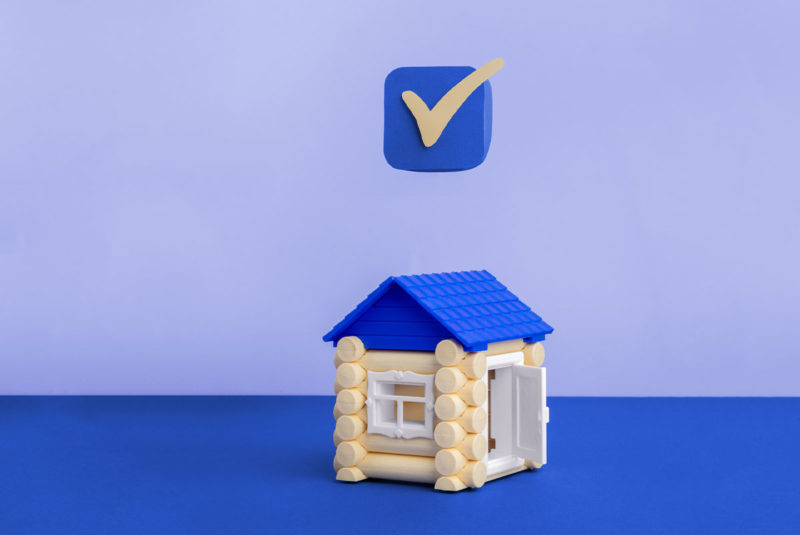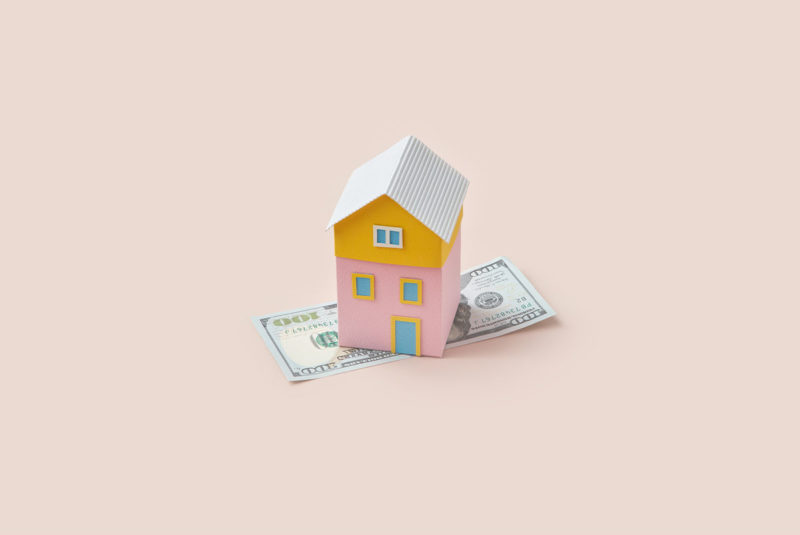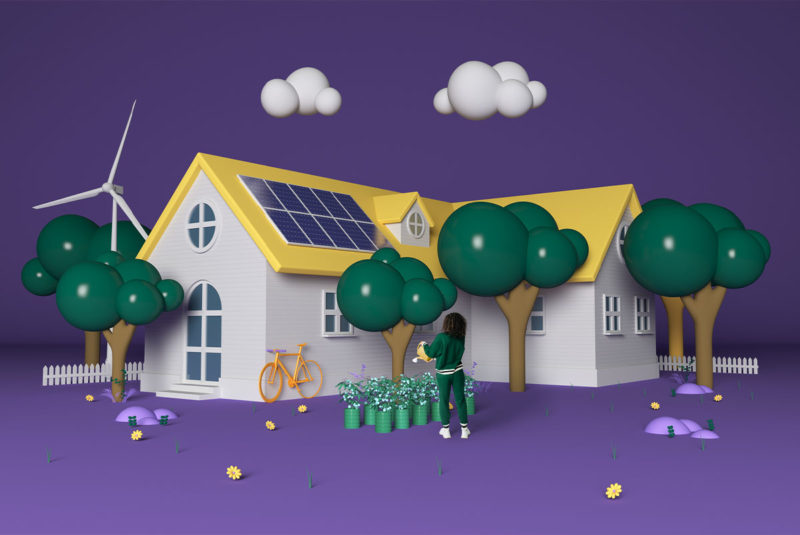When touring homes or checking out prospects online, do you ever admire the decor of a home so much that you wish you could buy it as-is? Or maybe you’ve experienced the opposite. Maybe you saw the perfect home, but something was off about the way it was decorated. That’s the power – good, bad or neutral – of home staging.
Staging a home is the real estate equivalent of getting out of your pajamas and getting dressed in the perfect outfit. It takes something that’s already great (hint: your home) and adds on the right finishing touches before its debut to the home buying universe.
In the right hands (and eye), home staging should highlight the best features of a home and create an appealing presentation for buyers. And because staging is an option many sellers don’t take advantage of, it’s an ideal way of getting a leg up on the market.
Home staging isn’t essential, but a few aesthetic changes may translate into plenty of enthusiasm for your property — which, hopefully, leads to plenty of offers.
What Is Home Staging?
Home staging prepares a home for sale. Essentially, you put your home’s best foot forward. IRL, it would look like putting on a suit for a job interview or displaying your fashion A-game on a first date.
On the surface, home staging sounds like decorating, but it can go beyond that. Staging can include deep cleaning, rearranging furniture, adding art, painting walls and anything else that could make a home appealing to buyers.
If decorating is an outfit change, staging is a head-to-toe makeover.
Staging can be a great way to improve a home’s value, adding thousands or potentially tens of thousands of dollars to a list price.
Why Home Staging Is Important
A staged home may not seem like a big deal – plenty of buyers can imagine what will improve a home without seeing it in person – but the numbers say something different. According to the numbers, staging can have a sizable difference in how prospective buyers view a home.
Staging gives home sellers financial purchase power. A home that looks move-in ready can be very appealing to buyers. In a 2021 National Association of REALTORS® survey, 23% of buyer’s agents said that staging increased the offer on a home by 1% – 5%.[1] When prices are already high in a seller’s market, this can mean even bigger profits on a home sale.
Staging (done right) can even create an emotional resonance for some home buyers. Buyers may find themselves excited by small details, like a fun paint color or swoon-worthy furniture.
When buyers see a home at its best, they are more likely to see themselves in the space enjoying family dinners, curling up with a good book or hosting a board game night with friends. That emotional tug can move buyers to make an offer or up their offer when the competition gets fierce.
11 Home Staging Tips
Love the idea of staging, but you have no idea where to start? You’re not alone. If you’ve never staged an entire home, trying to figure out how to do it on your own might feel intimidating.
So, here’s some good news: Professional home stagers exist. If you can afford a professional and you’d prefer a hands-off approach to staging your home, this might be a great option for you. But you don’t have to be a professional to have a good eye.
If you’re confident in your design savvy and you’re willing to learn some of the basics of interior decorating, going the DIY route might make a lot of sense and save you money.
If you’re up for the challenge, these 11 home staging tips will help you transform your home and make it more appealing to potential buyers.
1. We may not judge books by their cover – but we do with homes
You’ve probably heard of curb appeal. That’s when a home and property look perfect and welcoming from the outside. Usually, the first thing a prospective buyer sees is the exterior of your property. If you can’t wow them at first glance, they may not knock on your door to explore the interior.
Improving the outside of your home doesn’t always mean extensive landscaping or adding expensive touches, like brand-new siding. But mowing the lawn and calling it a day may not be enough.
Take care of any basic external renovations and repairs during that presale phase. This might involve repainting porch steps, patching cracks in a driveway, planting flowers or making sure any bushes are nicely trimmed.
If a potential buyer knocks on your front door, you’ll know you’re on the right track.
Now, you’ll just have to nail the interior.
2. Clean out the clutter (especially in storage spaces)
Few people have a clutter-free home. And that includes your prospective buyers! When you present an organized home, it might inspire some buyers to want to live in this orderly existence and space, too.
Pro tip: Don’t pile up your belongings in the closet. Buyers LOVE to check out storage spaces. Invest in a few storage pieces, like extra hanging bars, plastic stackable containers or filing cabinets, to keep your personal clutter organized and contained.
3. Depersonalize
Personalization was a big part of creating a comfortable living space for you and your family, but the opposite is true when it comes to strangers.
The point of staging your home is to make it appealing and inviting and to create a space where buyers can see themselves living. Those adorable pictures of your nieces and nephews won’t further that goal.
Before putting your home on the market, clear out anything super personal. Here’s a rule of thumb: If it doesn’t look like it belongs in a faux living room at a furniture store, it doesn’t belong in your newly staged home.
4. Deodorize
A clean, fresh-smelling home beats stale, stuffy air any day. Before opening your doors to prospective buyers, think about engaging their sense of smell, making sure that your property smells its very best.
Natural cleaners or essential oils can go a long way in completing your home’s transformation. If you’re not sure where to start, focus on the areas in your home that are more prone to odors, like your pets’ favorite hangout spots, the basement, kitchen or bathrooms.
Keep in mind that – for better or for worse – we often get used to the scent of our own homes and may not be able to tell if there is a questionable scent in the house. Ask your real estate agent for some advice on increasing your home’s scent appeal.
5. Give every room a purpose (and show it)
Maybe you like to work from home in your kitchen. Maybe you prefer having dinner in the living room and not at the dining room table. Your house, your rules (of course). But when you’re staging a home, it’s important to make sure each room has a defined purpose.
When buyers come through your home, it’s important that they understand how each space is best used.
The kitchen is for cooking and eating; the family room is for gathering around the TV; and the finished basement is the perfect rec space for foosball or air hockey.
That means removing any evidence of dinners in the living room and setting up the dining room table for dinner (with cloth napkins if you want to look fancy).
6. Make your walls count
When it comes to your walls, simpler is better. This may be the time to seriously consider painting over the fun accent wall in your living room and the purple walls in the bedroom. A neutral color will give buyers the room they’ll need to let their imaginations run free and reimagine the space.
You may also want to consider updating any wallpaper in the house. Outdated wallpaper could make a home or a space feel dated. While cosmetic fixes are great, if removing wallpaper reveals cracks or foundational issues, make those repairs a top priority.
7. Take care of those floors
Flooring can make or break a deal – especially if you have tired-looking carpet. If your flooring has seen better days, investing time and money on your floors can make your house look, feel and sound completely different.
Replacing or refurbishing flooring is really important in high-traffic areas, like foyers, kitchens, living rooms and bathrooms.
8. Every stage needs good lighting
Bright, welcoming lighting says, “Come in, sit down and fall in love with our home.”
If the light in your home is yellow, gloomy or dull, think about switching out your light bulbs. If your light fixtures can handle them, 3000K bulbs can be a great choice.
If brightening up your home requires more than switching bulbs, consider adding accent lighting (think: a floor or table lamp) that can create an appealing glow. You may also want to consider swapping out thick, heavy curtains for something translucent and airy.
9. Time to Feng shui
This concept of aesthetic-driven furniture arrangement has been proven to work. Feng shui requires a conscientious approach to furniture in a way that improves the flow of a room. Key factors include:
- Size
- Overall aesthetic appearance
- Placement by height and width (with the largest room item at the back and the smallest in front)
- Furniture quality
By strategically placing furniture and other elements around the room, you are highlighting the space you have to offer and giving the home a nice flow and appealing layout.
10. The power of curtains
Curtains are affordable, easy to hang and can make a huge difference in a space, making them a perfect tool for staging.
When used properly, drapes or curtains can control light, add style to a window area or provide a finishing touch to a room. In most cases, curtains should match the overall theme of a room, but picking a statement color can be a nice touch sometimes.
And curtains can be more than pretty fabric. Floor-length curtains can create the illusion of height, making ceilings appear higher. And that can be a boon for older or smaller homes.
11. Think Airbnb — but for selling
As a homeowner trying to sell, you’re more like a property manager than a hostess. So, approach staging like you would if you were prepping a hotel room or an Airbnb lodging for a guest.
Little gestures in advance of an open house or real estate appointment – like vases of fresh flowers and clean, folded bathroom towels and throw pillows – can say “get comfy” to buyers in a way that might tempt them to settle in, stay for a while – and make an offer.
First Impressions Matter: Period
The pressure to make a good first impression is definitely on when it comes to selling your home. Slapping a fresh coat of paint on the walls, organizing clutter and stashing family photos can make a big difference in the selling price of a home. Sure, it may add more time to your presale prep process, but a successful staging could also add up to bigger profits.
Looking to make a change?
Whether you want to buy a house, refinance or take cash out, you’re not alone. The experts are just a click away.
The Short Version
- Staging, the process of preparing a home for sale, can boost sales prices by quite a bit — even as much as 5%
- Staging can be left to the professionals, but it doesn't have to be. You can DIY to your heart's content
- A home that looks great is always a home that stands out, even in a crowded market
National Association of REALTORS®. “2021 Profile of Home Staging.” Retrieved October 2021 from https://cdn.nar.realtor/sites/default/files/documents/2021-profile-of-home-staging-report-04-06-2021.pdf




